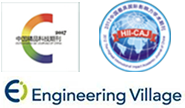Abstract:
This review systematically summarizes recent advancements in functional materials based on photothermal catalytic technology. Conventional photocatalytic systems have been significantly constrained in practical energy and environmental applications primarily due to their limited solar-to-chemical energy conversion efficiency. The emerging photothermal catalytic approach, which synergistically integrates the merits of photocatalysis and thermal catalysis, has demonstrated considerable potential by simultaneously enhancing energy conversion efficiency and reducing activation energy barriers. This work provides a comprehensive overview of three fundamental mechanisms in photothermal catalysis: Photo-assisted thermal catalysis, thermal-assisted photocatalysis, and photothermal synergistic catalysis, with particular emphasis on their distinct photothermal conversion principles and application scenarios.On this basis, the research progress of current hot photothermal catalytic materials is reviewed, and the challenges of the current development of photothermal catalytic technology in terms of material stability, photothermal response range and cost are pointed out, and the future development direction of photothermal catalytic technology is prospected. This paper aims to provide new ideas and references for photothermal catalysis research and promote the design and development of new catalytic materials with high photothermal conversion efficiency.


 下载:
下载: